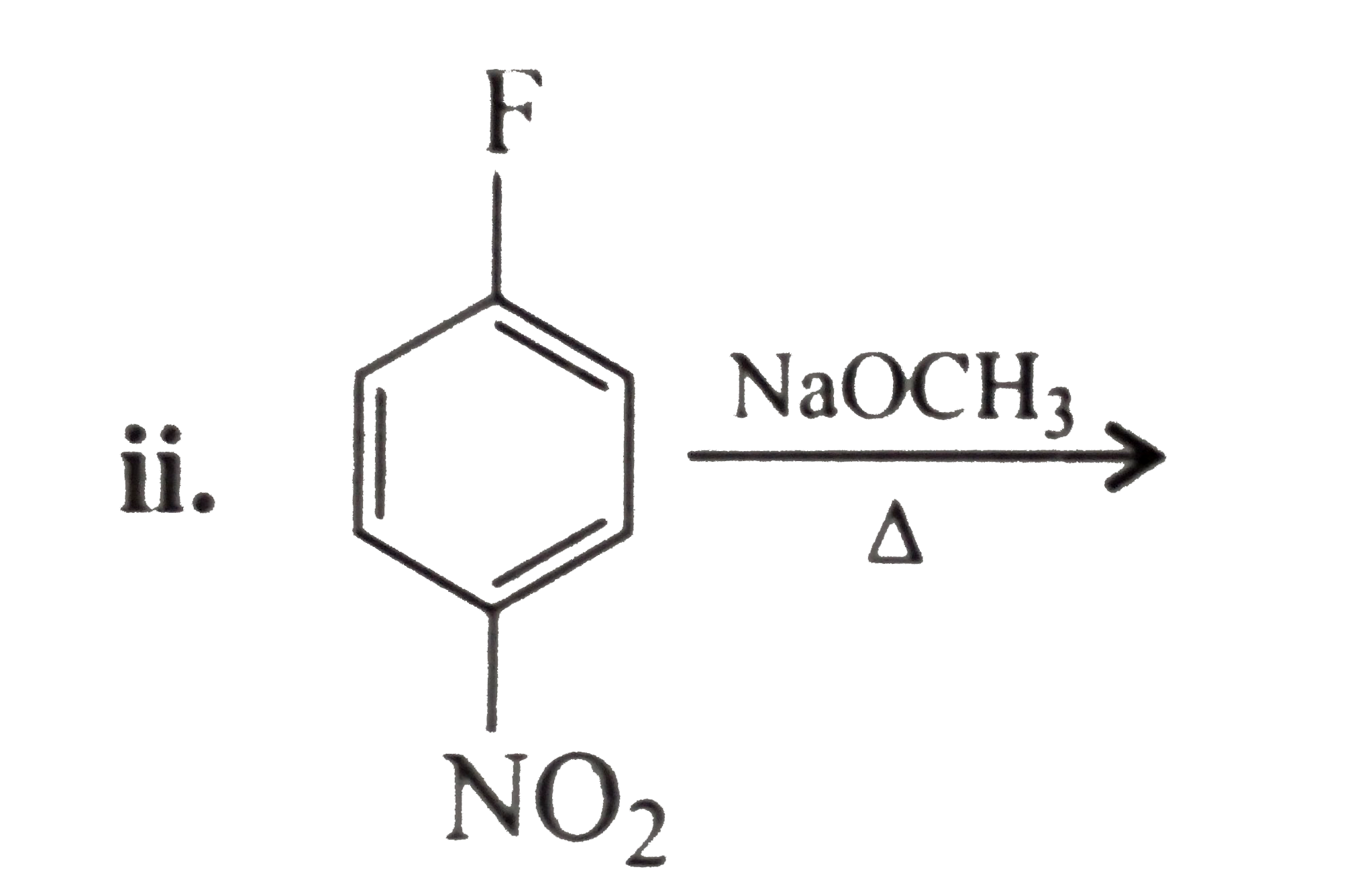The major product of the following reaction is :
C6H5CH2−CH3∣C∣Br−CH2−CH3C2H5ONa−−−−−→C2H5OH
C6H5CH2−CH3∣C∣OC2H5−CH2−CH3
C6H5CH2=C∣CH3−CH2−CH3
C6H5CH2−C∣CH3=CHCH3
C6H5CH2−C∣CH2CH3=CH2
The correct Answer is:B
To determine the major product of the given reaction, we will analyze the structure and the reaction conditions step by step.
Step 1: Identify the Reactants
The reactants provided are:
- A haloalkane: C6H5CH2C(CH3)Br
- A base: C2H5ONa in C2H5OH
Step 2: Analyze the Structure
The haloalkane can be broken down as follows:
- C6H5 represents a phenyl group (benzene ring).
- CH2 is connected to the phenyl group.
- C(CH3) indicates a carbon attached to a methyl group (isopropyl).
- Br is the leaving group.
Step 3: Reaction Mechanism
The base C2H5ONa can act as a nucleophile or a base. However, due to steric hindrance around the carbon attached to the bromine (Br), it is more likely to act as a base rather than a nucleophile.
Step 4: Base Action
The base will abstract a proton (H+) from the adjacent carbon. There are two possible hydrogens that can be abstracted:
1. The hydrogen attached to the carbon adjacent to the Br (C(CH3)).
2. The hydrogen attached to the carbon in the C6H5CH2 group.
Step 5: Determine the More Stable Product
When the base abstracts the hydrogen from the carbon adjacent to the Br (C(CH3)), the resulting structure will allow for the formation of a double bond between the C6H5CH2 and the carbon that was previously attached to the Br. This results in the formation of an alkene.
Step 6: Draw the Major Product
The major product after the elimination reaction will be:
- C6H5CH=CH(CH3)
Conclusion
The major product of the reaction is an alkene, specifically C6H5CH=CH(CH3).
Final Answer
The major product of the reaction is option B: C6H5CH=CH(CH3).
---
The reactants provided are:
- A haloalkane: C6H5CH2C(CH3)Br
- A base: C2H5ONa in C2H5OH
The haloalkane can be broken down as follows:
- C6H5 represents a phenyl group (benzene ring).
- CH2 is connected to the phenyl group.
- C(CH3) indicates a carbon attached to a methyl group (isopropyl).
- Br is the leaving group.
The base C2H5ONa can act as a nucleophile or a base. However, due to steric hindrance around the carbon attached to the bromine (Br), it is more likely to act as a base rather than a nucleophile.
The base will abstract a proton (H+) from the adjacent carbon. There are two possible hydrogens that can be abstracted:
1. The hydrogen attached to the carbon adjacent to the Br (C(CH3)).
2. The hydrogen attached to the carbon in the C6H5CH2 group.
When the base abstracts the hydrogen from the carbon adjacent to the Br (C(CH3)), the resulting structure will allow for the formation of a double bond between the C6H5CH2 and the carbon that was previously attached to the Br. This results in the formation of an alkene.
The major product after the elimination reaction will be:
- C6H5CH=CH(CH3)
The major product of the reaction is an alkene, specifically C6H5CH=CH(CH3).
The major product of the reaction is option B: C6H5CH=CH(CH3).
Topper's Solved these Questions
- BOOK - DISHA PUBLICATIONCHAPTER - HALOALKANES AND HALOARENES EXERCISE - Exercise-1:Concept Builder(Topicwise)(TOPIC 1:)(General Characteristics of Haloakanes and Halorenes)9videos
HALOALKANES AND HALOARENES
- BOOK - DISHA PUBLICATIONCHAPTER - HALOALKANES AND HALOARENES EXERCISE - Exercise-1:Concept Builder(Topicwise)(TOPIC 2:)(Preparation and Properties of Haloalkanes)34videos
HALOALKANES AND HALOARENES
- BOOK - DISHA PUBLICATIONCHAPTER - GENERAL PRINCIPLES AND PROCESSES OF ISOLATION OF ELEMENTSEXERCISE - EXERCISE -1: CONCEPT APPLICATOR35videos
GENERAL PRINCIPLES AND PROCESSES OF ISOLATION OF ELEMENTS
- BOOK - DISHA PUBLICATIONCHAPTER - HYDROCARBONSEXERCISE - EXERCISE -2 CONCEPT APPLICATOR29videos
HYDROCARBONS
Similar Questions
Knowledge Check
- Question 1 - Select One
The major product formed in the following reaction is :
CH3−CH3∣C∣H−CH2BrCH3O−−−−−→CH3OHACH3−CH3∣C∣H−CH2OCH3BCH3−C∣OCH3H−CH2CH3CCH3−CH3∣CH=CH2DCH3−CH3∣C∣OCH3−CH3 - Question 2 - Select One
The major product of the following reaction is :
C6H5CH2−CH3∣C∣Br−CH2CH3C2H5ONa−−−−−→C2H5OHAC6H5CH2−C∣CH3=CHCH3BC6H5CH2−C∣CH2CH3=CH2CC6H5CH2−CH3∣C∣OC2H5−CH2CH3DC6H5CH=C∣CH3−CH2CH3 - Question 3 - Select One
The major product of the following reaction is:
C6H5CH2−CH3∣C∣Br−CH2−CH3C2H5Na−−−−→C2H5OHAC6H5CH2−CH3∣C∣OC2H5−CH2−CH3BC6H5CH=C∣CH3−CH2−CH3CC6H5CH2−C∣CH3=CHCH3DC6H5CH2−C∣CH2CH3=CH2
The major product of the following equation is.
C2H5−CH3| C | Ph−CH2−CH| OH−CH3conc. H2SO4−−−−−−−→ΔView SolutionThe major product of the following reaction is:
CH3−CH3∣C∣H−CHCH3∣BrCH3OH−−−−→View SolutionThe major product of the following reaction is
CH3−CH3| C | OH−CH2H2SO4−−−→| OHView SolutionMajor product of the given reaction is
CH3−CH3∣C∣CH3−CH∣CI−CH3C2H5O−−−−−−→View SolutionWhich of the following combinations give C6H5−CH3∣C∣CH2CH3−OH?
View Solution


